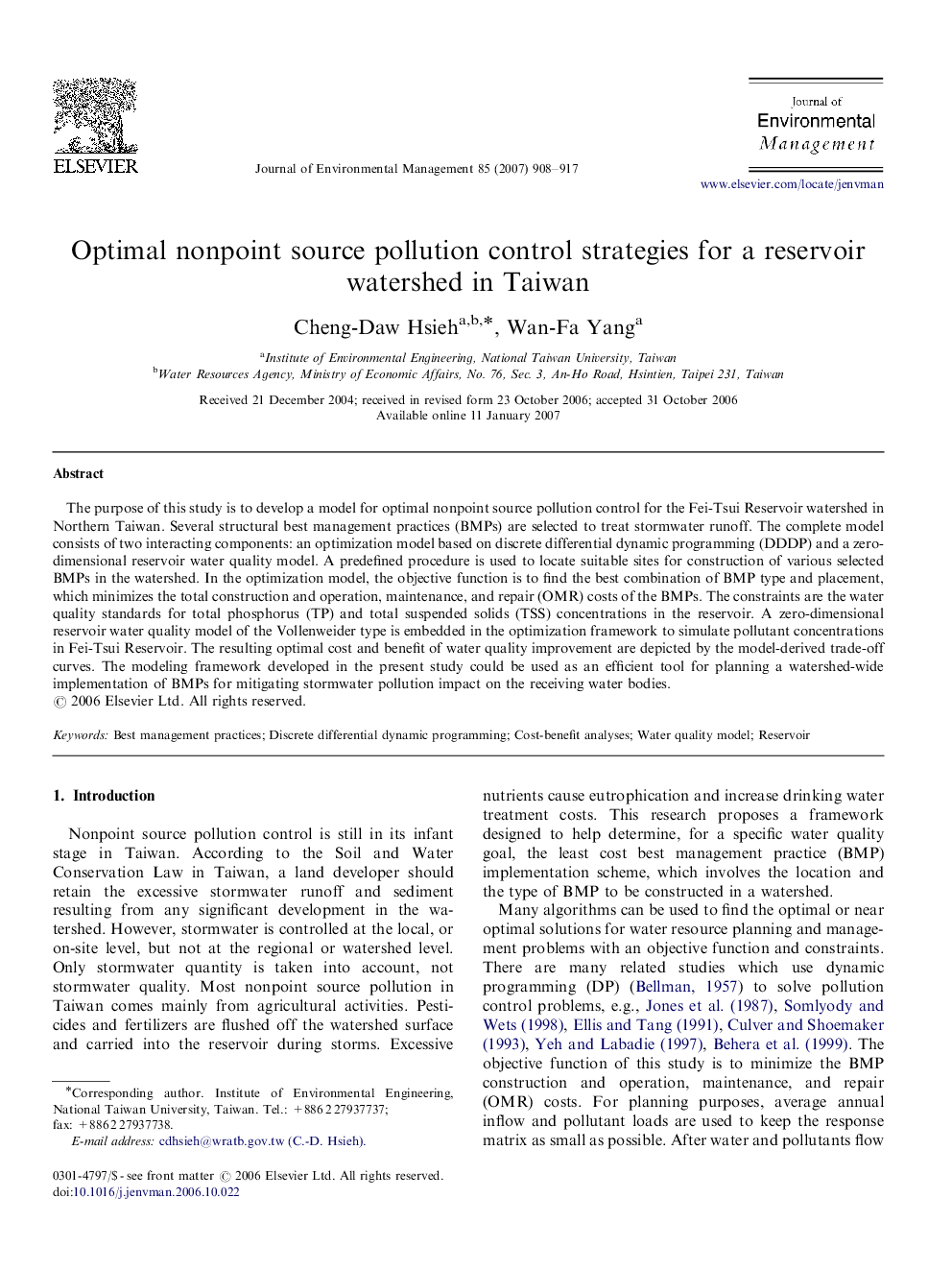| Article ID | Journal | Published Year | Pages | File Type |
|---|---|---|---|---|
| 1058494 | Journal of Environmental Management | 2007 | 10 Pages |
The purpose of this study is to develop a model for optimal nonpoint source pollution control for the Fei-Tsui Reservoir watershed in Northern Taiwan. Several structural best management practices (BMPs) are selected to treat stormwater runoff. The complete model consists of two interacting components: an optimization model based on discrete differential dynamic programming (DDDP) and a zero-dimensional reservoir water quality model. A predefined procedure is used to locate suitable sites for construction of various selected BMPs in the watershed. In the optimization model, the objective function is to find the best combination of BMP type and placement, which minimizes the total construction and operation, maintenance, and repair (OMR) costs of the BMPs. The constraints are the water quality standards for total phosphorus (TP) and total suspended solids (TSS) concentrations in the reservoir. A zero-dimensional reservoir water quality model of the Vollenweider type is embedded in the optimization framework to simulate pollutant concentrations in Fei-Tsui Reservoir. The resulting optimal cost and benefit of water quality improvement are depicted by the model-derived trade-off curves. The modeling framework developed in the present study could be used as an efficient tool for planning a watershed-wide implementation of BMPs for mitigating stormwater pollution impact on the receiving water bodies.
